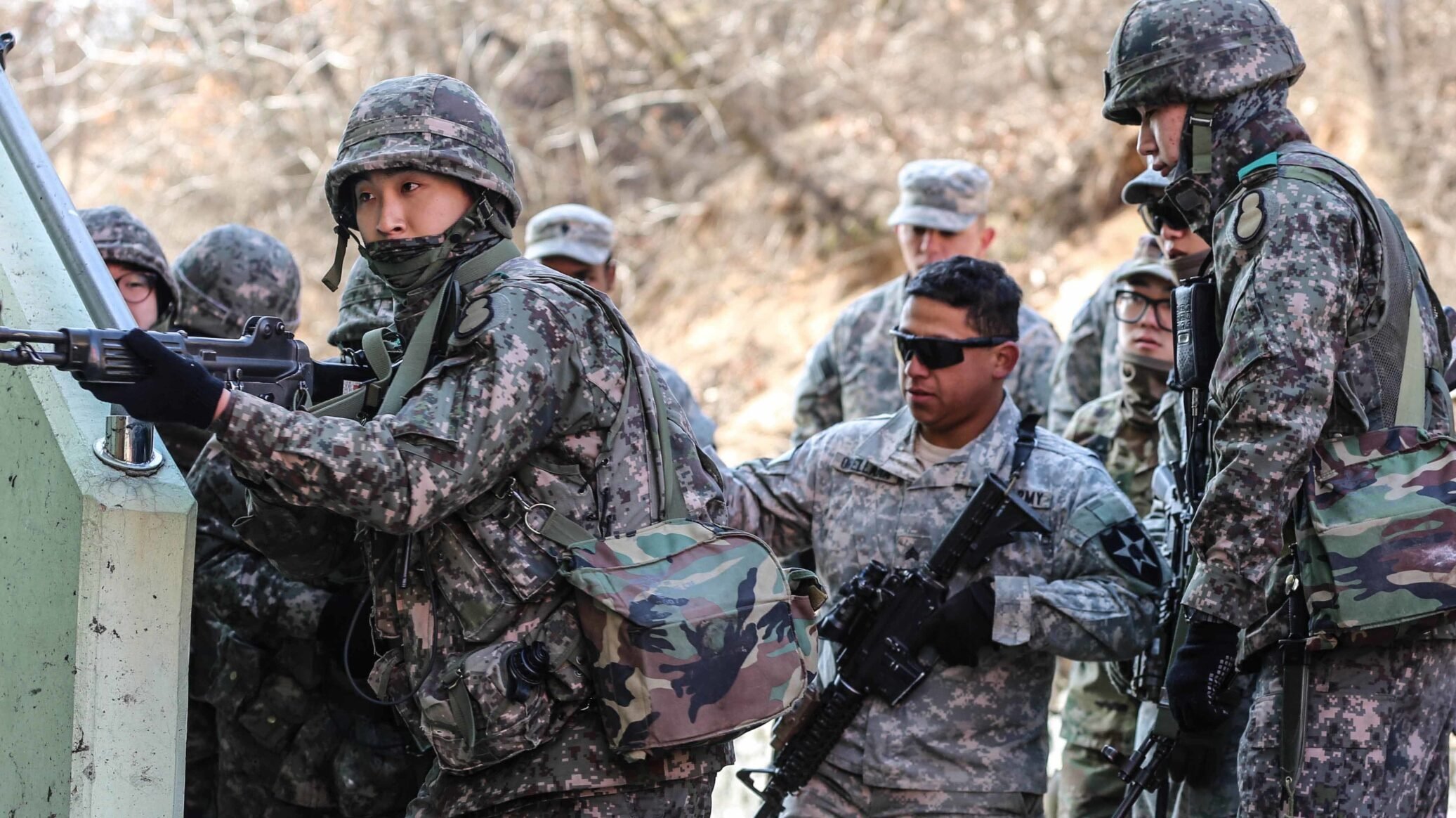The South Korean military has unveiled a “Kill Web” concept to tackle North Korea’s missile and nuclear threats amid rising tensions with Pyongyang.
South Korean defense ministry announced on March 3 that the South Korean military would use a more effective operational concept, “Kill Web,” to eliminate threats from North Korea’s advancing nuclear and missile capabilities even at the prelaunch stage.
In light of North Korea’s ongoing development of its nuclear and missile capabilities, which seriously threaten South Korea’s national security, Seoul is seeking an immediate and strategic response plan.
Thus, the ministry presented the plan to introduce the “Kill Web” concept. This was unveiled as a fundamental component of Military Innovation 4.0, a project by the Yoon Suk Yeol government to use cutting-edge technologies, including artificial intelligence (AI), to build a more smart and resilient military.
Seoul explained that the Kill Web is a multilayered, integrated system that uses cyber operations, electronic warfare techniques, and other strategies to thwart and prevent the adversary from attempting to fire a missile even before it has been launched.

The nation currently has a preemptive strike mechanism called Kill Chain in place that is made to carry out a contingency mission in a linear, sequential manner.
However, the Kill Web is a flexible strategy that allows field officers to modify their initial target selections to maximize strike operations.
The Kill Chain is a part of South Korea’s Three-Axis system. This entails deploying the Korea Massive Punishment and Retaliation (KMPR) campaign to neutralize the enemy’s leadership and military infrastructure and thwart approaching missile strikes using the Korea Air and Missile Defense (KAMD).
According to the official, the Kill Chain concept calls for moving in a single path, whereas the Kill Web, like a spider’s web, requires frequent mission modifications to ensure operational efficacy.
The official emphasized that the Kill Web approach would be employed to execute the Kill Chain system more efficiently rather than to replace it.
The defense ministry stated in the military innovation plan that it will create integrated “all-domain” operations with AI and other cutting-edge technology to ensure that the nation’s military can win a war with minimal casualties in the shortest time.
US-South Korea Cooperation
The new concept aims to devise a prompt counterattack to any North Korean aggression against Seoul. In recent months, South Korea has stepped up its cooperation with the US military and integrated advanced technologies, including AI.
The new concept also calls for AI-based vigilance to employ manned and unmanned technology to protect critical military installations, such as frontline guard posts and coastal and seaborne divisions.
On March 3, the militaries of South Korea and the US announced that they would continue with large-scale annual military exercises later in the month despite North Korea’s vows to take unprecedented intense action against such drills.
North Korea will likely react to the impending South Korean-American drills with more aggressive rhetoric and provocative missile testing since it sees them as an invasion preparation.
The South Korean and US armies will conduct the Freedom Shield exercise, a computer-simulated command post training, from March 13–23 to improve their defense and reaction capabilities.

The training will focus on North Korean aggression, lessons acquired from recent conflicts, and the evolving security environment.
Col. Lee Sung-Jun, a spokesperson at South Korea’s Joint Chiefs of Staff, said that the alliance between the United States and Korea would prepare for the Freedom Shield exercise while staying firmly prepared to respond to any potential provocations from the North Korean military.
In the event of future conflicts, North Korea has also vowed to use its nuclear arsenal first. The US military forewarned the North that nuclear weapons would end that regime.
In the meantime, during a conference of top military commanders, Defense Minister Lee Jong-sup called for the military to “completely” transform itself to become a powerful, combat-ready force.
The ministry presented a list of important priorities at the meeting, including setting up combat mission-focused units and enhancing realistic training using mock enemy provocations.
The ministry is tasked with improving the working conditions of entry-level officers by raising their salary and developing a training facility that would permit live-fire simulations in all weather situations.
- Contact the author at ashishmichel(at)gmail.com
- Follow EurAsian Times on Google News




